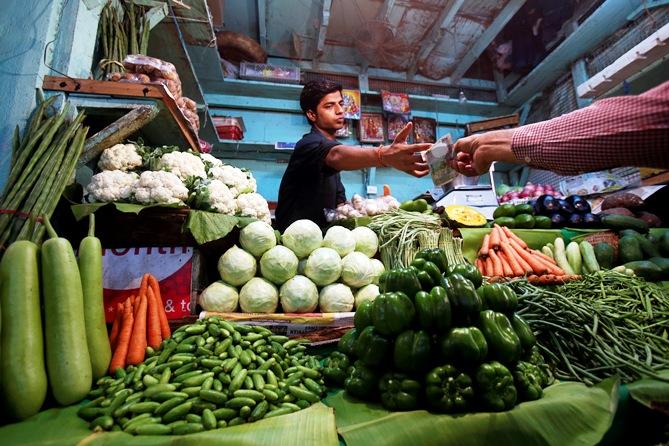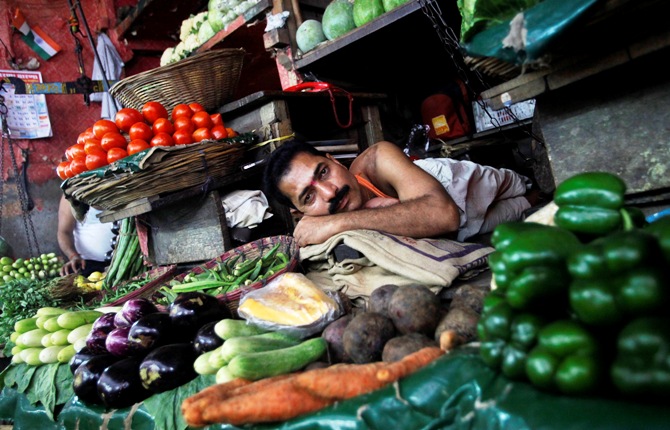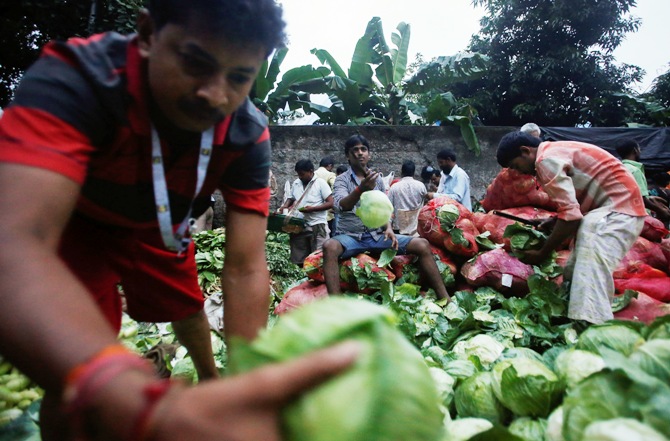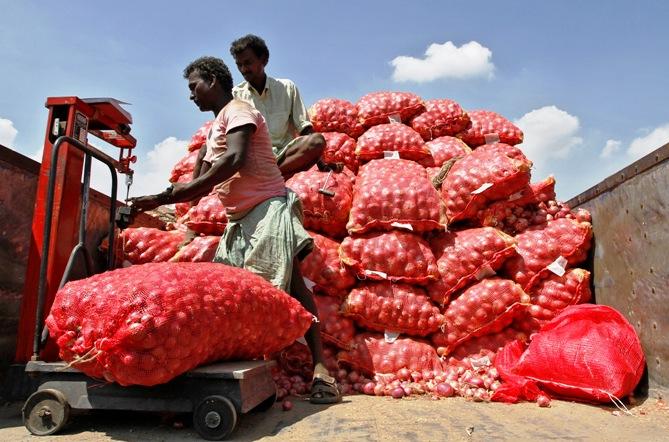 | « Back to article | Print this article |
Why are vegetable prices hitting the roof?
Over the past year, several vegetables have seen steep price increases in the country’s various wholesale markets.
Onion has been in the news but tomato and cabbage, for instance, have also seen steep rises.
Prices might reduce as the supply increases.
Also, farmers tend to sow more where they see higher prices, as vegetables are short-duration crops.
However, till cold storage and processing facilities are not improved, prices are likely to stay elevated.
In the past year, tomato and onion prices went up fivefold; those of cabbage tripled.
Click NEXT to read further. . .
Why are vegetable prices hitting the roof?
Several vegetables’ prices have doubled.
Many of these are sold at over Rs 100 a kg in retail markets, as in this city.
“The prices of vegetable particularly used by big and organised processors such as those in the wafers/ketchup/fries segments are more prone to hikes and for a longer period compared to others.
“These big players buy in bulk and store for captive use in anticipation of any lean arrival.
 “This results in scarcity for consumers; onion, potato, tomato are some among these.
“This results in scarcity for consumers; onion, potato, tomato are some among these.
Also, direct purchases by organised big retail players remove the pressure of arrivals in wholesale markets.
Click NEXT to read further. . .
Why are vegetable prices hitting the roof?
“Hence, prices remain firm even in cases where arrivals could have been good,” said Jagdeep Grewal, vice-president, commodities and research, Kunvarji Group.
Onions have been on the minds of policy makers for months but the prices remain elevated, despite their interventions.
“A repetition is likely with potatoes, with West Bengal government suspending their supply outside the state.
“They did so a year earlier, too, to keep prices under control in the state.
“It has resulted in potato prices in neighbouring Bihar, Jharkhand and Odisha rising by 50-60 per cent in the past week.
Click NEXT to read further. . .
Why are vegetable prices hitting the roof?
Maharashtra was an importer of tomatoes from neighbouring Gujarat but late rains in the latter state has damaged the crop. in late rains in Gujarat recently.
“The trade is going into reverse, as Gujarat is now purchasing tomatoes from Maharashtra, due to over a month of delay in crop maturity and harvesting,” said Avinash Patil, deputy director of the Agricultural Produce Marketing Committee at Vashi, Navi Mumbai.
Against the daily consumption of 75 vehicles of an average of nine tonnes each, tomato arrivals at the Vashi APMC market have been 50 vehicles.
Demand has risen sharply due to the ongoing festive season but not supply.
Because of massive spoilage, leafy vegetables have become costlier.
The October rainfall has damaged crops across major producing states, resulting in short supply into the mandis.
Click NEXT to read further. . .
Why are vegetable prices hitting the roof?
Hoarding is another issue in times of scarcity.
In the case of onions, the Competition Commission of India had initiated inquiries into alleged cartelisation by some traders at the Lasalgaon mandi near Nashik.
Big traders in several mandis are known to hoard commodities in such times.
“In times of supply constraint, there is higher proximity to hoarding, which adds fuel to the fire,” said D K Joshi, chief economist, CRISIL.
He says “the spike in vegetable prices is mostly due to supply shocks, which can be taken care of only by improving cold storage and processing facilities”.
The recent spike in onion prices up to Rs 60-65 a kg, with controlled arrivals and auctions in big mandis such as Lasalgaon and Pimpalgaon also indicate support from politicians.
“While there is no clear evidence of funding from politicians, it is true that traders have been empowered to control the market with supply and auctions,” said a senior trade official, who monitors the onion market.





